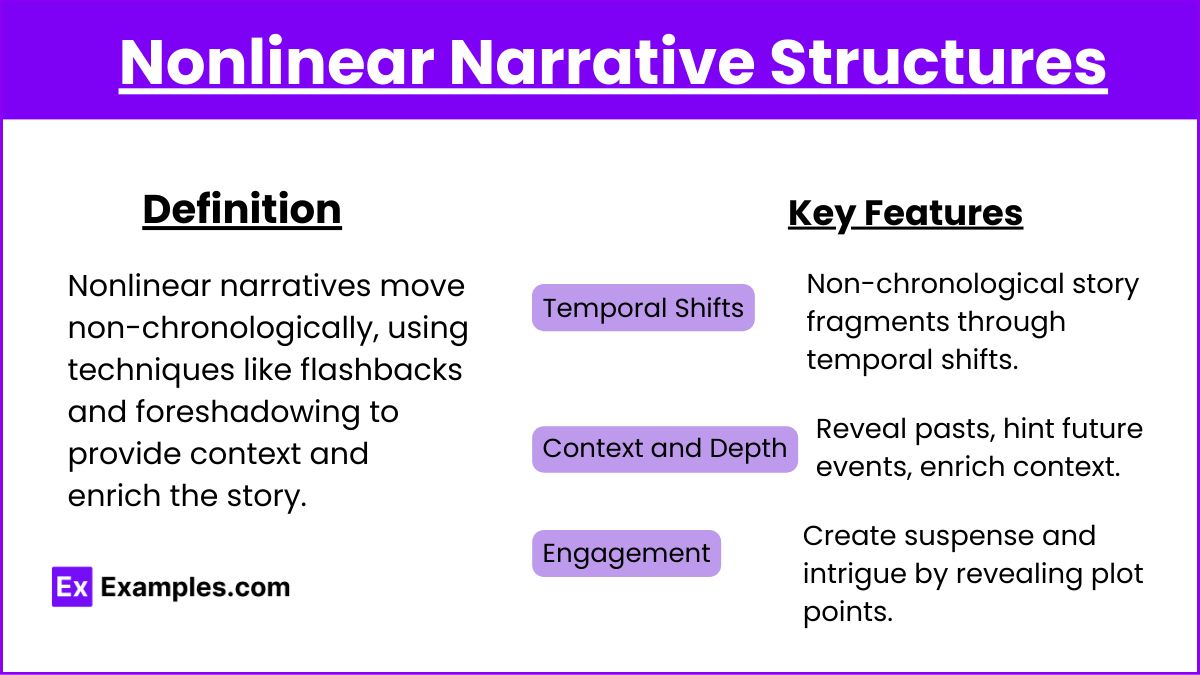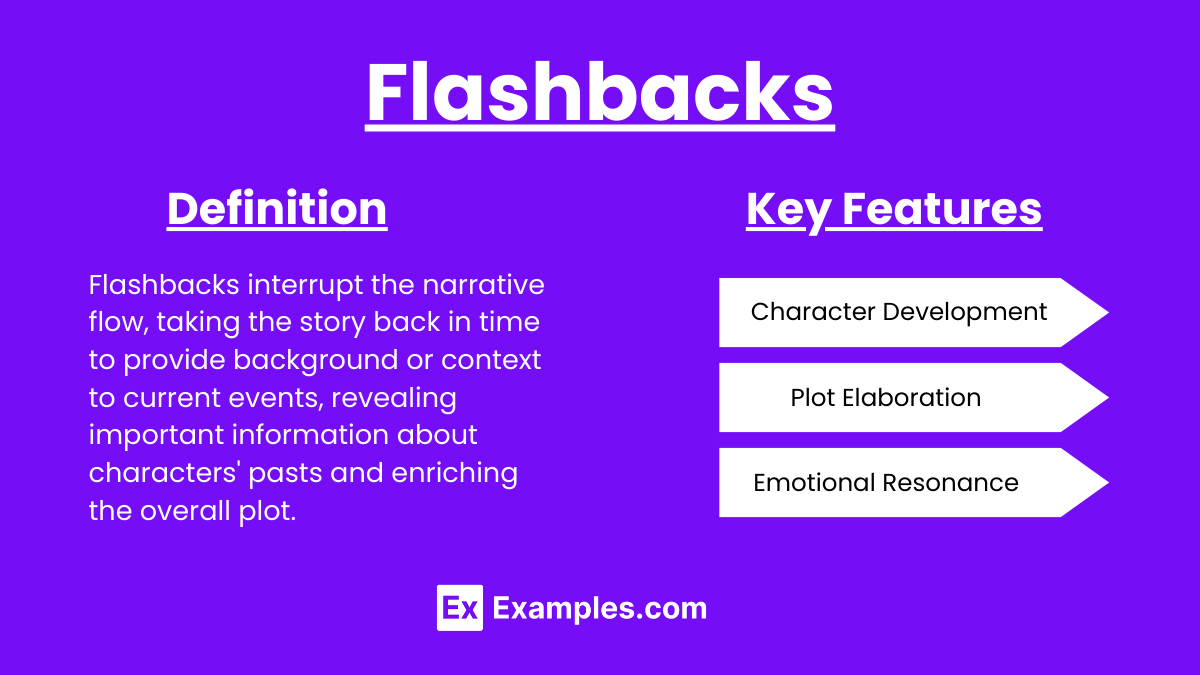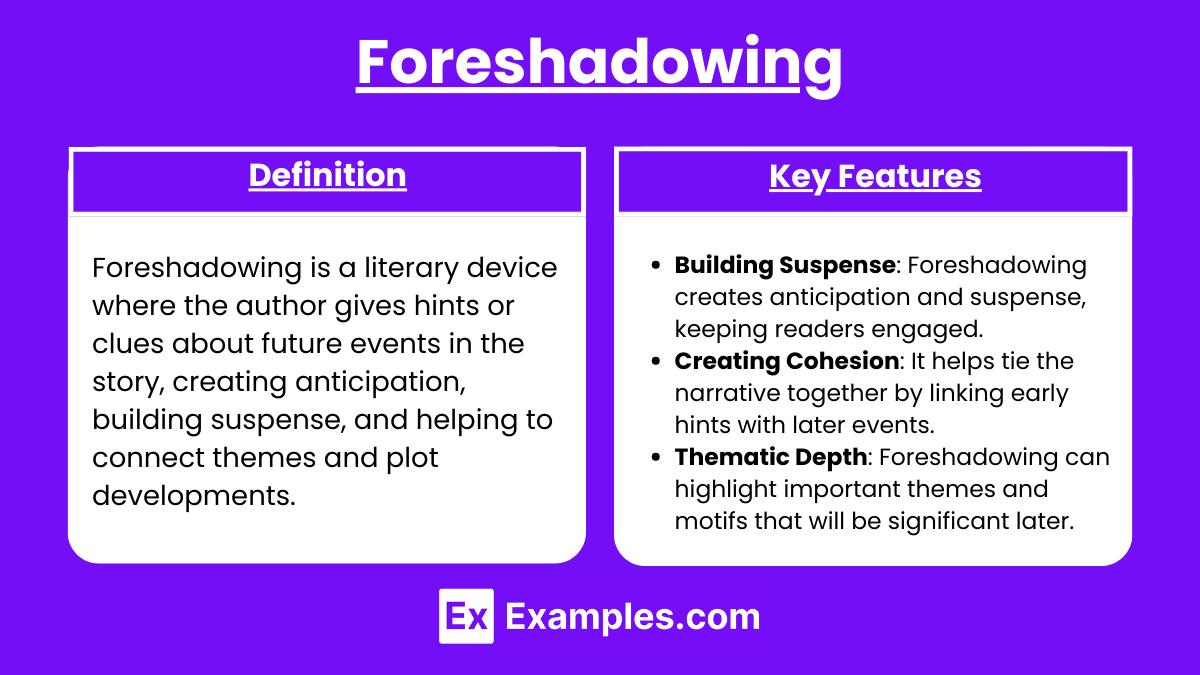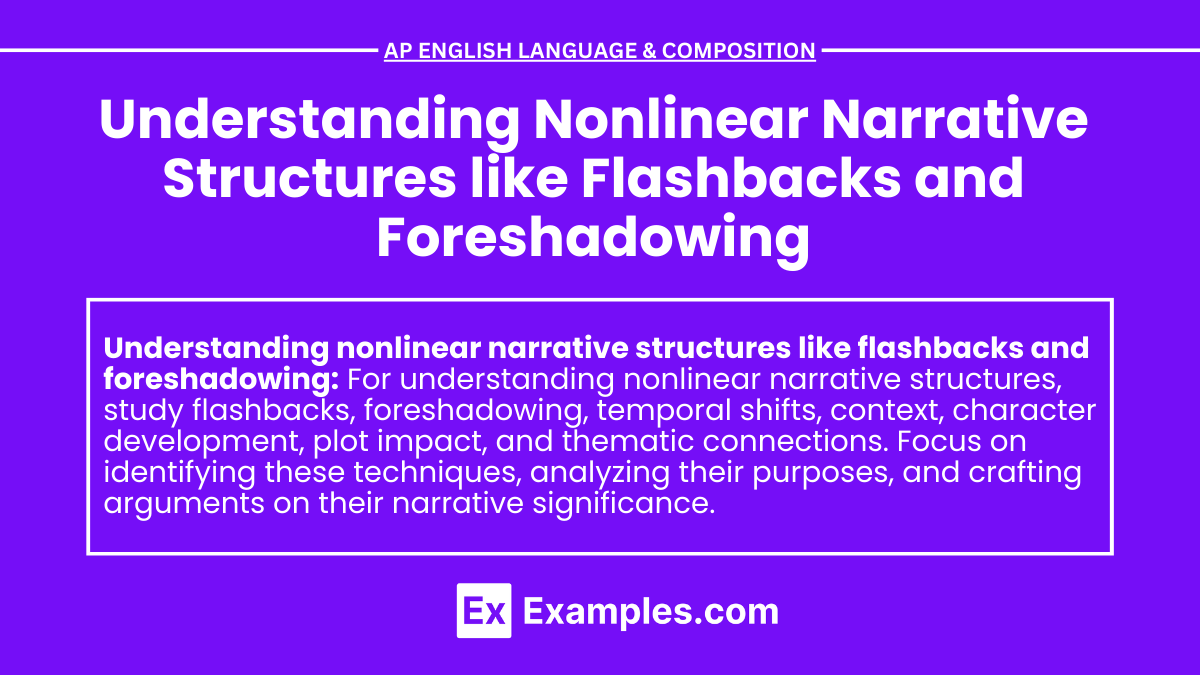In the study of AP English Language and Composition, mastering nonlinear narrative structures like flashbacks and foreshadowing is essential for analyzing complex texts. These techniques enrich narratives by providing deeper context and building suspense, allowing students to craft insightful rhetorical sentences and detailed cumulative sentences. Understanding these elements enhances argumentative writing and argumentative speech, as students learn to construct compelling arguments that explore the intricate layers of a story’s plot and character development.
Learning Objectives
By the end of this lesson on nonlinear narrative structures, students will be able to craft cumulative sentences that detail the use of flashbacks and foreshadowing, write an explanatory essay exploring their significance, and develop an expository essay outlining their impact on plot and character development. They will learn to create rhetorical sentences that highlight the thematic connections, formulate a final thesis statement that encapsulates their analysis, and enhance their critical thinking skills by evaluating the role and effectiveness of nonlinear narratives in literature.
Nonlinear Narrative Structures

Nonlinear narrative structures are storytelling techniques that do not follow a direct, chronological sequence of events. Instead, they may move back and forth in time, providing information and context through various means such as flashbacks and foreshadowing.
Key Features
- Temporal Shifts: The narrative jumps between different times, offering pieces of the story out of chronological order.
- Context and Depth: These techniques provide deeper understanding and context, revealing characters’ pasts and hinting at future events.
- Engagement: Nonlinear narratives can create suspense, intrigue, and engagement by gradually revealing key plot points.
Flashbacks

Flashbacks are interruptions in the narrative that take the story back in time to provide background or context to the current events.
Key Features
- Character Development: Flashbacks reveal important information about a character’s past, motivations, and experiences.
- Plot Elaboration: They provide context that helps explain present events and actions.
- Emotional Resonance: By showing significant past events, flashbacks can evoke emotional responses from the audience.
Examples in Literature
- “To Kill a Mockingbird” by Harper Lee: The adult Scout narrates her childhood, with numerous flashbacks providing context and depth.
- “The Great Gatsby” by F. Scott Fitzgerald: Flashbacks reveal Gatsby’s past and his motivations for his actions in the present.
Analyzing Flashbacks
- Identify the Flashback: Note when the narrative shifts to a past event.
- Contextual Relevance: Examine how the flashback relates to the current events in the story.
- Character Insight: Analyze what the flashback reveals about the character’s background and motivations.
- Thematic Connection: Consider how the flashback supports the overall themes of the work.
Foreshadowing

Foreshadowing is a literary device where the author gives hints or clues about what will happen later in the story.
Key Features
- Building Suspense: Foreshadowing creates anticipation and suspense, keeping readers engaged.
- Creating Cohesion: It helps tie the narrative together by linking early hints with later events.
- Thematic Depth: Foreshadowing can highlight important themes and motifs that will be significant later.
Examples in Literature
- “Romeo and Juliet” by William Shakespeare: Romeo’s feelings of foreboding before attending the Capulet party foreshadow the tragic events to come.
- “Of Mice and Men” by John Steinbeck: The death of Candy’s dog foreshadows the novel’s climax.
Analyzing Foreshadowing
- Identify Clues: Look for hints or clues that suggest future events.
- Predict Outcomes: Consider how these hints might play out in the narrative.
- Link to Themes: Analyze how the foreshadowing relates to the story’s themes and motifs.
- Evaluate Impact: Reflect on how foreshadowing affects the reader’s experience and understanding of the story.
Steps to Writing About Nonlinear Narrative Structures

- Introduction: Introduce the concept of nonlinear narrative structures, specifically flashbacks and foreshadowing.
- Technique Identification: Identify instances of flashbacks and foreshadowing in the text.
- Analysis: Analyze the purpose and effect of these techniques on character development, plot, and theme.
- Thematic Connection: Discuss how these narrative techniques support the overall themes of the work.
- Conclusion: Summarize the significance of nonlinear narrative structures in enhancing the reader’s understanding and engagement with the story.


